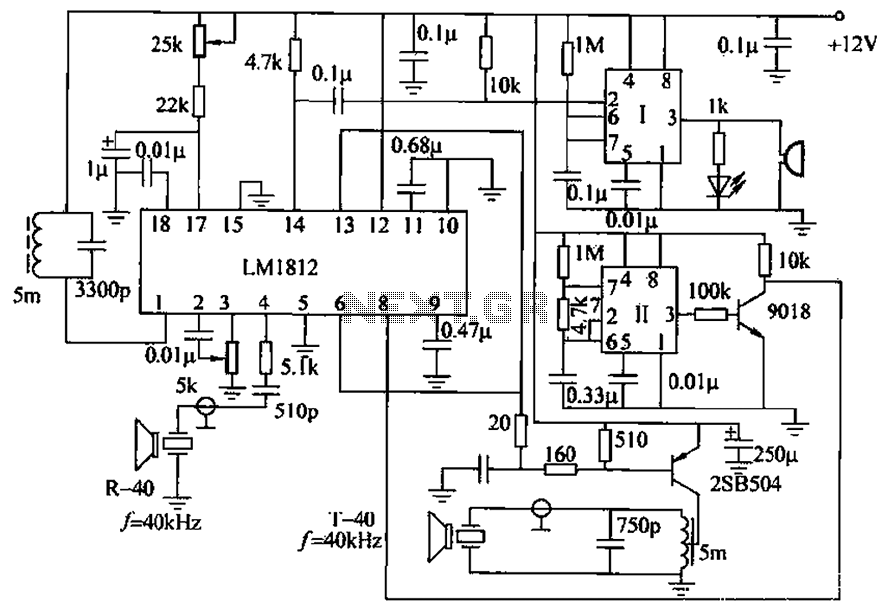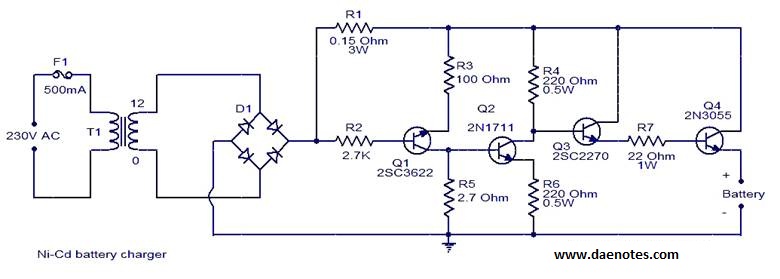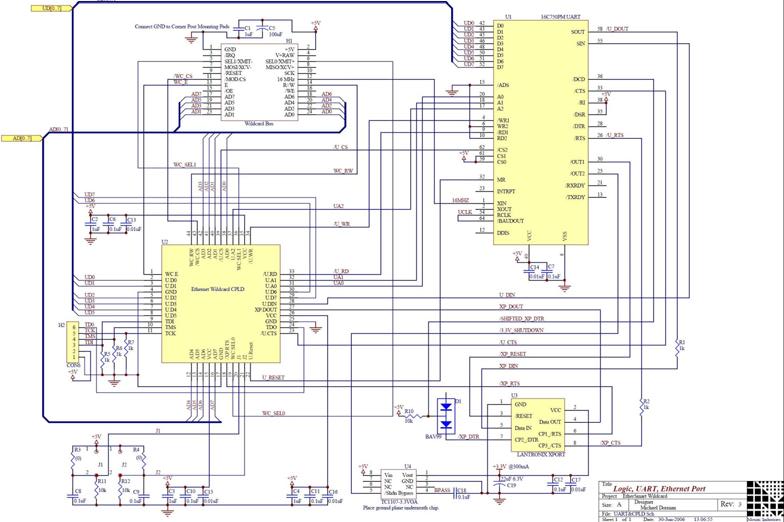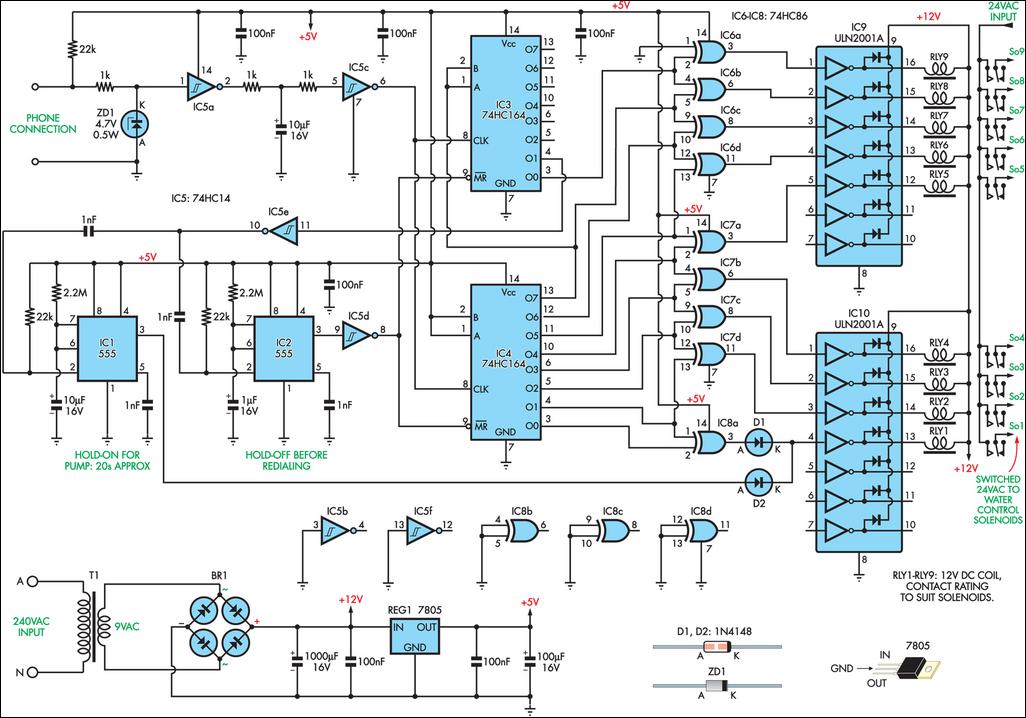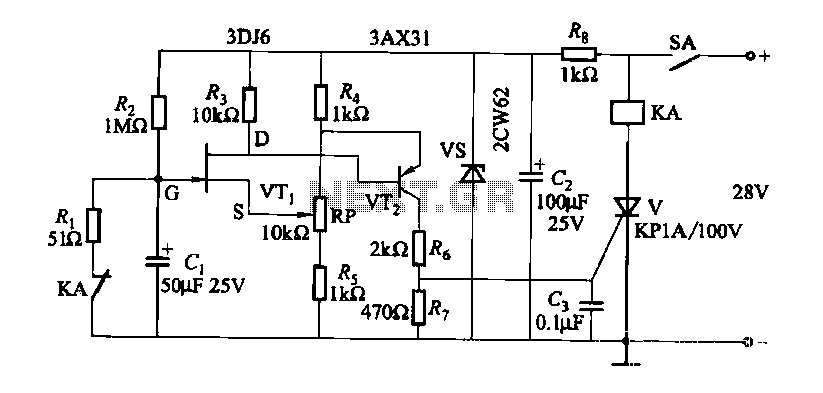
plant watering watcher circuit schematic

This circuit is designed to indicate when a plant requires watering. An LED flashes at a low frequency when the soil in the flower pot is excessively dry, and it turns off as the moisture level rises. The sensitivity of the circuit can be adjusted by modifying resistor R2, allowing it to accommodate various soil types, pots, and probe configurations.
The plant watering indicator circuit typically employs a moisture sensor, which can be a resistive or capacitive type, to monitor the soil's moisture content. The sensor is connected to a comparator circuit that evaluates the voltage level from the sensor against a reference voltage. When the soil moisture drops below a predetermined threshold, the comparator outputs a signal that activates the LED indicator.
The LED's flashing rate can be controlled by a timing circuit, which may include components such as a 555 timer or a simple RC (resistor-capacitor) network. This timing circuit generates a pulse signal that turns the LED on and off at a specific interval, providing a visual cue to the user about the soil's condition.
Resistor R2 plays a crucial role in setting the sensitivity of the moisture detection. By adjusting R2, the user can change the reference voltage level at which the comparator triggers the LED. This feature allows the circuit to be fine-tuned for different soil types, pot sizes, and moisture probe characteristics, ensuring reliable operation across various conditions.
Power supply considerations should also be addressed, as the circuit can be powered by a low-voltage source, such as batteries or a small solar panel, making it suitable for indoor and outdoor applications. The overall design should ensure that the components are weather-resistant if used in outdoor settings, protecting them from moisture and environmental factors.
In summary, this circuit efficiently monitors soil moisture levels and provides a clear visual indication when watering is needed, with adjustable sensitivity to cater to diverse plant care requirements.This circuit is intended to signal when a plant needs water. A LED flashes at a low rate when the ground in the flower-pot is too dry, turning off when the moisture level is increasing. Adjusting R2 will allow the user to adapt the sensitivity of the circuit for different grounds, pots and probe types..
🔗 External reference
The plant watering indicator circuit typically employs a moisture sensor, which can be a resistive or capacitive type, to monitor the soil's moisture content. The sensor is connected to a comparator circuit that evaluates the voltage level from the sensor against a reference voltage. When the soil moisture drops below a predetermined threshold, the comparator outputs a signal that activates the LED indicator.
The LED's flashing rate can be controlled by a timing circuit, which may include components such as a 555 timer or a simple RC (resistor-capacitor) network. This timing circuit generates a pulse signal that turns the LED on and off at a specific interval, providing a visual cue to the user about the soil's condition.
Resistor R2 plays a crucial role in setting the sensitivity of the moisture detection. By adjusting R2, the user can change the reference voltage level at which the comparator triggers the LED. This feature allows the circuit to be fine-tuned for different soil types, pot sizes, and moisture probe characteristics, ensuring reliable operation across various conditions.
Power supply considerations should also be addressed, as the circuit can be powered by a low-voltage source, such as batteries or a small solar panel, making it suitable for indoor and outdoor applications. The overall design should ensure that the components are weather-resistant if used in outdoor settings, protecting them from moisture and environmental factors.
In summary, this circuit efficiently monitors soil moisture levels and provides a clear visual indication when watering is needed, with adjustable sensitivity to cater to diverse plant care requirements.This circuit is intended to signal when a plant needs water. A LED flashes at a low rate when the ground in the flower-pot is too dry, turning off when the moisture level is increasing. Adjusting R2 will allow the user to adapt the sensitivity of the circuit for different grounds, pots and probe types..
🔗 External reference
Warning: include(partials/cookie-banner.php): Failed to open stream: Permission denied in /var/www/html/nextgr/view-circuit.php on line 713
Warning: include(): Failed opening 'partials/cookie-banner.php' for inclusion (include_path='.:/usr/share/php') in /var/www/html/nextgr/view-circuit.php on line 713

